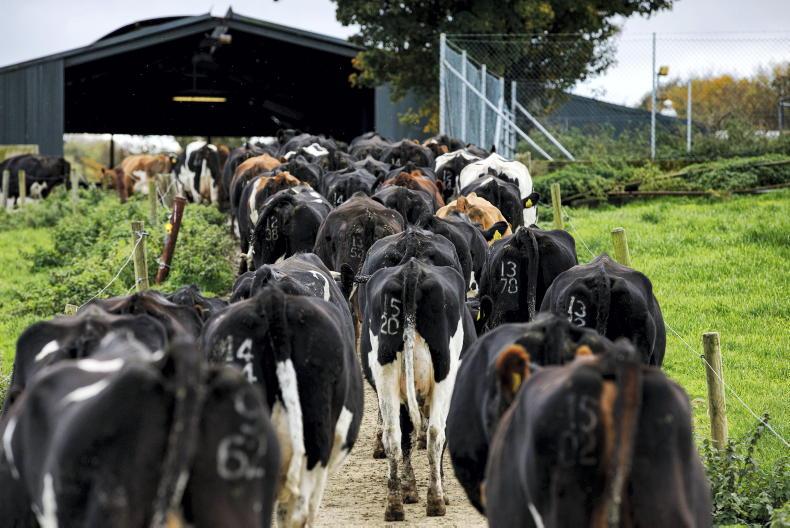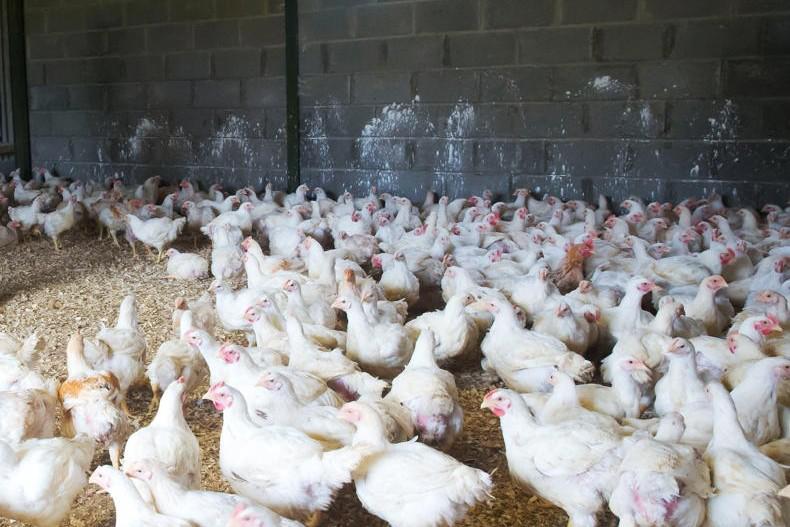Over €1bn has been invested on dairy farms since the lifting of quotas. Thanks to the solid profitability from highly efficient dairy farms this investment has been funded through a combination of cashflow and bank finance.
Dairy has been a key sector of growth for Bank of Ireland and we continue to be confident about the future of dairy farming in Ireland. Before considering any expansion a farm should be at optimum efficiency at current output levels. Many farmers will prioritise getting milk in the tank and worry about the infrastructure at a future date.
Whatever investments are prioritised, the long-term commercial and environmental sustainability of the business is paramount. Getting this balance right is key.

Pat.Byrnes@boi.com
Requirements and Considerations when preparing to seek bank funding for expansion
1 Efficiency: Is your existing business at optimum performance in terms of milk solids per cow, calving interval, six week calving rate, grass utilisation? It is vital that the existing business is efficient before considering expansion as more cows don’t necessarily mean more profit. The ICBF Co-op performance reports provide excellent insight to the technical efficiency and output performance of the herd.
2 Financial management: Becomes more important as scale increases especially if taking on increased debt.
3 Banking track record: The bank will want to understand if you have operated your business current account and existing loans within pre agreed limits and repayment schedules.
4 Most recent three years financial accounts: This will give a balanced view on the past financial performance.
5 Business plan: For larger projects, the bank will want to understand where you want to take your business and understand the assumptions around how you plan to get there.
6 Repayment capacity: Having analysed past and projected financials, the bank will calculate your expected repayment ability.
7 Details of existing stock: To understand the genetic profile of the herd (EBI etc.) and how many young stock are on hand to support the planned expansion.
8 Location of existing land and building infrastructure: Are the milking platform and support blocks adequate to sustain the proposed stocking rates? Dependency on leased land will need to be considered along with the duration of the leases.
9 Current farm debt: Having a clear understanding of existing loans and commitments is important to allow the bank to prepare a funding model that works.
10 Living expenses and tax liabilities: The bank understands that the business will need to fund personal living expenses and tax.

\Donal O' Leary
11 Security: Most banks lend up to 70% of the current market value of land. When considering borrowing for your farm, allow sufficient time for the application to be processed and funds to be advanced, which can typically take from one to three months.
12 Milk price: The bank will factor in potentially negative developments that are outside the control of the farm such as a sustained low milk prices or a rise in feed and fertiliser prices. Dairyflex loans from Bank of Ireland through participating co-ops take account of milk price volatility and repayments can be matched to seasonal production volumes.
13 Trading structure: With farm companies, the bank will need to understand the flow of funds between the company and its owner. When lending to a farm company, typically the Bank will require a Debenture over the assets of the company supported by a personal guarantee of the directors and a first legal charge on land.
14 Debt structure: The duration of a loan should be aligned with the purpose of the loan:
15 Planning: Budget for at least 10% unforeseen costs when building new facilities. When leasing or buying land, allow additional funds to develop.
16 Manage risks: Consider fixing a portion of your milk supply or fixing interest rates on some debt to reduce volatility in cash flow.
17 Environmental sustainability: What is the overall environmental impact of the plan taking into account factors such as stocking rates, nitrate limits and slurry storage?
18 Farm labour: The proposed labour structure will have to be sustainable and adequately costed into the budget. Your work life balance should always be a consideration.
19 Stakeholders: Get the views of your trusted advisers (family, discussion group, accountant/tax adviser, Teagasc/agri consultant).
20 You and your bank: We want to give farmers peace of mind by providing you greater control over your finances. Earlier this year, we launched FarmPro, a digital financial management and planning service with Ifac to create a simpler lending experience for our shared customers. CL
Bank of Ireland is regulated by the Central Bank of Ireland. Warning: Lending criteria, and terms and conditions apply. Over 18 years only. The cost of your repayments may increase

John Farrell, agricultural development manager, north Leinster, at Bank of Ireland.

Pat.Byrnes@boi.com
Read more
Your money: cashflow management in challenging times
What would happen if there were no farm subsidies in Ireland?
Over €1bn has been invested on dairy farms since the lifting of quotas. Thanks to the solid profitability from highly efficient dairy farms this investment has been funded through a combination of cashflow and bank finance.
Dairy has been a key sector of growth for Bank of Ireland and we continue to be confident about the future of dairy farming in Ireland. Before considering any expansion a farm should be at optimum efficiency at current output levels. Many farmers will prioritise getting milk in the tank and worry about the infrastructure at a future date.
Whatever investments are prioritised, the long-term commercial and environmental sustainability of the business is paramount. Getting this balance right is key.

Pat.Byrnes@boi.com
Requirements and Considerations when preparing to seek bank funding for expansion
1 Efficiency: Is your existing business at optimum performance in terms of milk solids per cow, calving interval, six week calving rate, grass utilisation? It is vital that the existing business is efficient before considering expansion as more cows don’t necessarily mean more profit. The ICBF Co-op performance reports provide excellent insight to the technical efficiency and output performance of the herd.
2 Financial management: Becomes more important as scale increases especially if taking on increased debt.
3 Banking track record: The bank will want to understand if you have operated your business current account and existing loans within pre agreed limits and repayment schedules.
4 Most recent three years financial accounts: This will give a balanced view on the past financial performance.
5 Business plan: For larger projects, the bank will want to understand where you want to take your business and understand the assumptions around how you plan to get there.
6 Repayment capacity: Having analysed past and projected financials, the bank will calculate your expected repayment ability.
7 Details of existing stock: To understand the genetic profile of the herd (EBI etc.) and how many young stock are on hand to support the planned expansion.
8 Location of existing land and building infrastructure: Are the milking platform and support blocks adequate to sustain the proposed stocking rates? Dependency on leased land will need to be considered along with the duration of the leases.
9 Current farm debt: Having a clear understanding of existing loans and commitments is important to allow the bank to prepare a funding model that works.
10 Living expenses and tax liabilities: The bank understands that the business will need to fund personal living expenses and tax.

\Donal O' Leary
11 Security: Most banks lend up to 70% of the current market value of land. When considering borrowing for your farm, allow sufficient time for the application to be processed and funds to be advanced, which can typically take from one to three months.
12 Milk price: The bank will factor in potentially negative developments that are outside the control of the farm such as a sustained low milk prices or a rise in feed and fertiliser prices. Dairyflex loans from Bank of Ireland through participating co-ops take account of milk price volatility and repayments can be matched to seasonal production volumes.
13 Trading structure: With farm companies, the bank will need to understand the flow of funds between the company and its owner. When lending to a farm company, typically the Bank will require a Debenture over the assets of the company supported by a personal guarantee of the directors and a first legal charge on land.
14 Debt structure: The duration of a loan should be aligned with the purpose of the loan:
15 Planning: Budget for at least 10% unforeseen costs when building new facilities. When leasing or buying land, allow additional funds to develop.
16 Manage risks: Consider fixing a portion of your milk supply or fixing interest rates on some debt to reduce volatility in cash flow.
17 Environmental sustainability: What is the overall environmental impact of the plan taking into account factors such as stocking rates, nitrate limits and slurry storage?
18 Farm labour: The proposed labour structure will have to be sustainable and adequately costed into the budget. Your work life balance should always be a consideration.
19 Stakeholders: Get the views of your trusted advisers (family, discussion group, accountant/tax adviser, Teagasc/agri consultant).
20 You and your bank: We want to give farmers peace of mind by providing you greater control over your finances. Earlier this year, we launched FarmPro, a digital financial management and planning service with Ifac to create a simpler lending experience for our shared customers. CL
Bank of Ireland is regulated by the Central Bank of Ireland. Warning: Lending criteria, and terms and conditions apply. Over 18 years only. The cost of your repayments may increase

John Farrell, agricultural development manager, north Leinster, at Bank of Ireland.

Pat.Byrnes@boi.com
Read more
Your money: cashflow management in challenging times
What would happen if there were no farm subsidies in Ireland?













SHARING OPTIONS